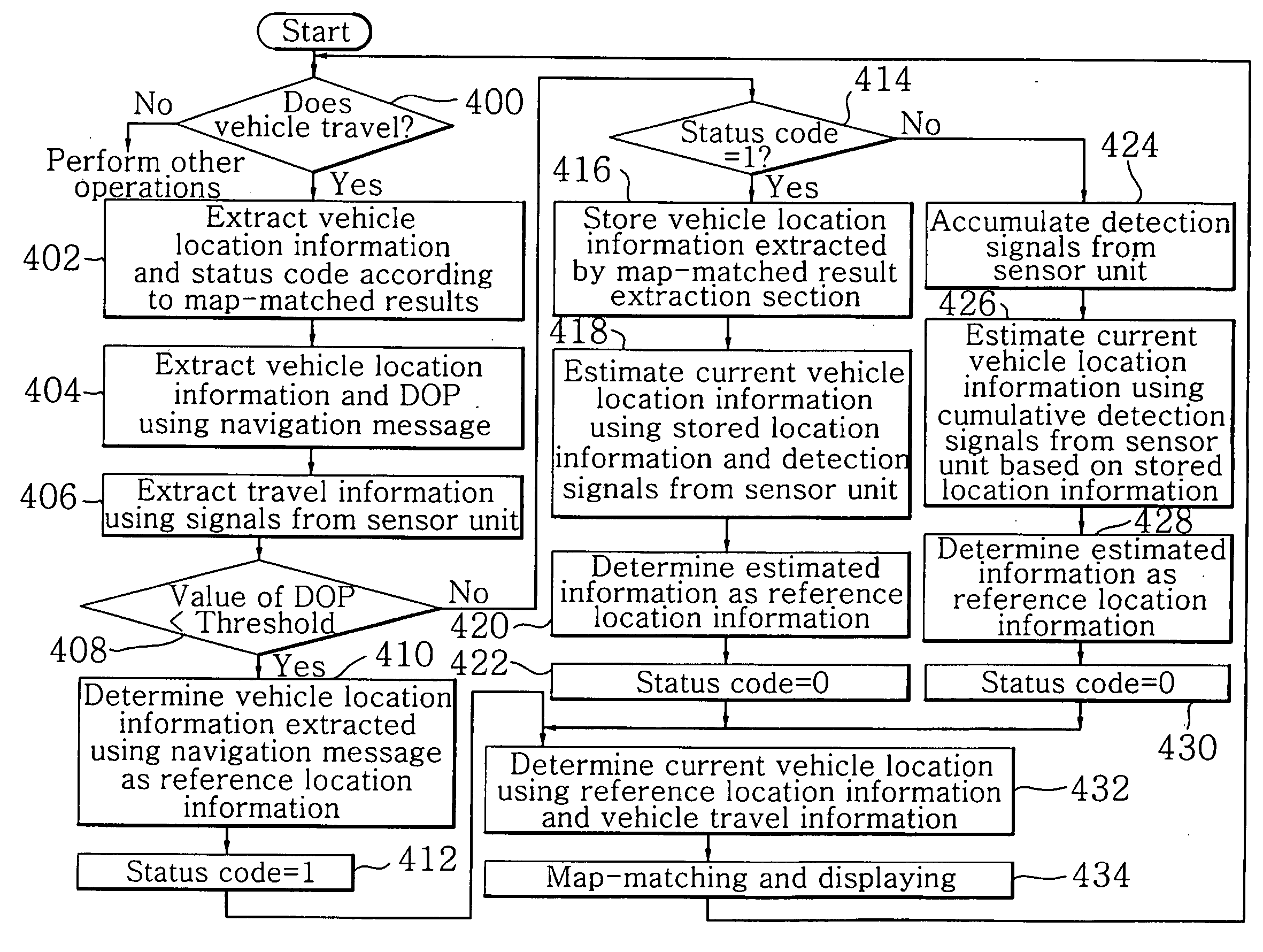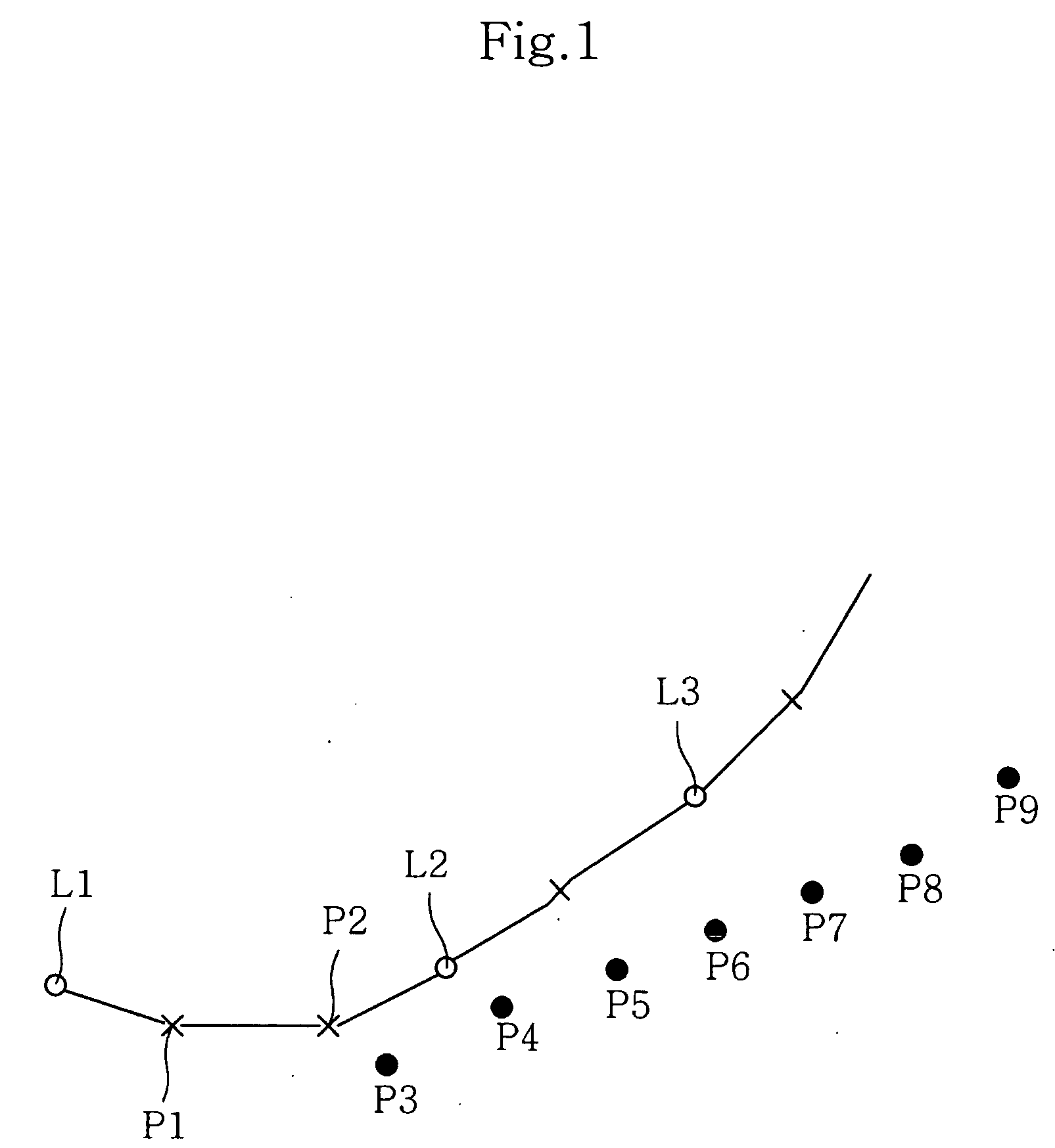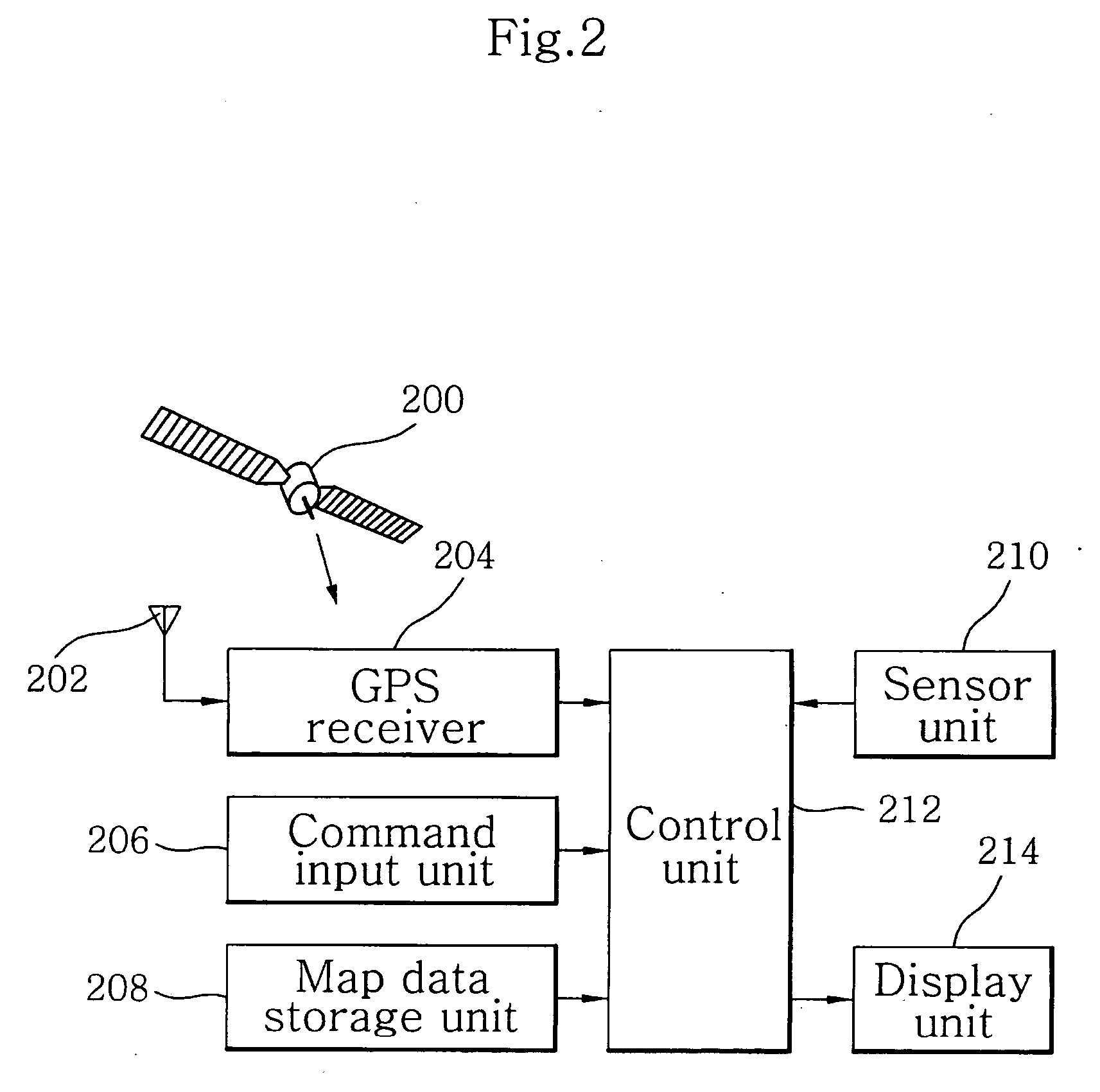Apparatus and method for detecting vehicle location in navigation system
a technology of navigation system and apparatus, applied in traffic control systems, navigation instruments, instruments, etc., can solve the problems of wasting fuel, traffic congestion, and wasting more than 14.35 billion liters of fuel per year, and 2.7 billion hours of work tim
- Summary
- Abstract
- Description
- Claims
- Application Information
AI Technical Summary
Benefits of technology
Problems solved by technology
Method used
Image
Examples
Embodiment Construction
[0053] Hereinafter, a method of detecting a vehicle location in a navigation system according to the present invention will be described in detail with reference to accompanying drawings.
[0054]FIG. 2 is a block diagram showing a configuration of an apparatus for detecting a vehicle location according to the present invention. As shown in the figure, the apparatus comprises a GPS receiver 204 for receiving a navigation message, which has been transmitted by a GPS satellite 200, through an antenna 202; a command input unit 206 for inputting an operation command corresponding to a user's manipulation; a map data storage unit 208 for storing a digital map data therein; a sensor unit 210, including a gyroscope, an odometer, a biaxial inclinometer for detecting lateral and longitudinal inclinations of a vehicle, and the like installed on a vehicle, to detect a travel angle difference, a traveled distance, and lateral and longitudinal inclinations of the vehicle; a control unit 212 for co...
PUM
 Login to View More
Login to View More Abstract
Description
Claims
Application Information
 Login to View More
Login to View More - R&D
- Intellectual Property
- Life Sciences
- Materials
- Tech Scout
- Unparalleled Data Quality
- Higher Quality Content
- 60% Fewer Hallucinations
Browse by: Latest US Patents, China's latest patents, Technical Efficacy Thesaurus, Application Domain, Technology Topic, Popular Technical Reports.
© 2025 PatSnap. All rights reserved.Legal|Privacy policy|Modern Slavery Act Transparency Statement|Sitemap|About US| Contact US: help@patsnap.com



